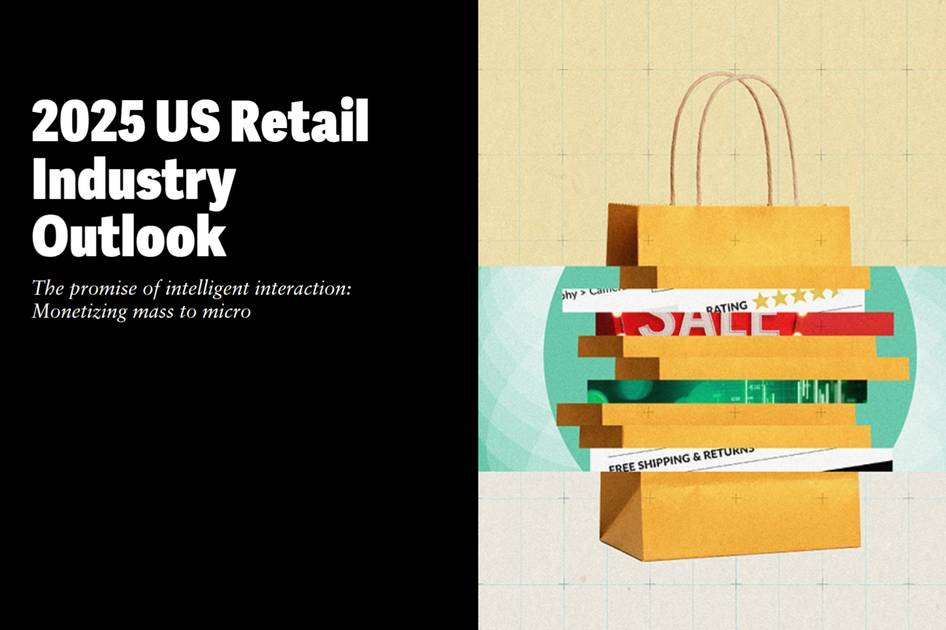The retail landscape is undergoing a significant transformation, shifting from a mass-market approach to a hyper-personalized, data-driven model known as “mass to micro”. This evolution, while promising, presents both opportunities and challenges for fashion industry executives. This article will address some key trends in the US retail market that are likely to impact the fashion industry, based on a recent report by Deloitte.
Economic Context and Consumer Behavior
The US economy is projected to grow, with a 2.4% real GDP increase expected in 2025. Consumer spending is also predicted to rise by 3.1%. This growth is supported by easing inflation, a healthy labor market, and potential relief from high borrowing costs. However, consumers are increasingly value-conscious, seeking lower prices and more affordable brands. This trend is creating a “loyalty crisis” as shoppers prioritize cost over brand allegiance.
- Consumers are switching to more affordable brands and discount retailers, and they are seeking private label or dupe products.
- They are centering purchases around promotional periods.
- They are shopping more frequently but with smaller basket sizes.
- Nearly 6 in 10 retail executives anticipate consumers will value price over loyalty.
Personalization and Engagement
Retailers are increasingly focusing on personalization strategies to attract and retain customers. This includes:
- Loyalty Programs: Strengthening loyalty programs through personalization, tiering, and co-branding is seen as a top growth opportunity.
- Engaging Experiences: Utilizing AI and machine learning (ML) to enhance customer engagement through precision targeting, ad curation, and interactive displays is becoming more common. For example, a denim retailer piloted a jeans fit guide via an interactive voice questionnaire to enhance personalized online shopping experiences.
- Convenience: Offering last-mile delivery options and inventory visibility is a key focus. Generative AI is also being utilized for product recommendations and price comparisons.
- Discounts and Promotions: Retailers expect an increase in price wars, and are using AI to dynamically adjust prices.
Omnichannel Strategies
The fashion industry is also seeing a move toward omnichannel capabilities, as a way to create a more seamless experience. This involves:
- In-House Delivery Services: Many retailers are expanding their in-house delivery services and automated micro-fulfillment centers. Some retailers are testing surcharges for quicker pickups or delivery, with some consumers showing a willingness to pay for faster service.
- Shoppable Media: There is a significant increase in social commerce, particularly among younger consumers. Retailers are exploring platforms like TikTok, as well as collaborations with media companies, to reach new audiences. Shoppable media can increase profitability through trust, reduced returns, and greater convenience.
- Enhanced Physical Stores: While online shopping grows, most purchases still occur in physical stores. Retailers are focusing on data-driven store design, immersive experiences, and integrating digital technologies such as touchscreens. Investments are also being made in retail theft prevention technologies.
Technological Investments and Efficiencies
To achieve a mass-to-micro model, retailers are investing in technology to improve efficiency. This involves:
- AI and Automation: Generative AI is increasingly used for chatbots, demand forecasting, and inventory management.
- Supply Chain Optimization: Retailers are focusing on AI forecasting, warehouse automation, and real-time inventory visibility.
- Mergers and Acquisitions (M&A): There is an increase in M&A activity as retailers seek to scale up, diversify revenue streams, or acquire technology. For example, some are purchasing technology or logistics companies to enhance personalized experiences.
- Alternative Revenue Streams: Retailers are exploring avenues such as consumer data monetization, supply chain services, and retail media networks (RMNs).
Challenges and Opportunities
The fashion industry faces challenges such as rising business costs due to climate change, price wars, retail theft, and strained consumer trust due to new technologies. However, there are also significant opportunities for growth. Retail executives are focused on strengthening loyalty programs, improving digital commerce, and enhancing omnichannel experiences.
Key Takeaways for Fashion Executives
- Embrace Personalization: Adopt strategies that cater to individual consumer preferences and values, focusing on data-driven personalization.
- Optimize the Omnichannel Experience: Seamlessly integrate online and offline shopping experiences. Explore in-house delivery, shoppable media, and enhanced physical stores to create more profitable transactions.
- Invest in Technology: Utilize AI, ML, and automation to improve efficiency in forecasting, inventory management, and overall operations.
- Address Value-Conscious Consumers: Offer competitive pricing, private label options, and targeted promotions to attract price-sensitive shoppers.
- Explore Alternative Revenue Streams: Consider utilizing RMNs and other business-to-business capabilities to diversify revenue.
- Focus on Data Quality: Invest in data quality to fully leverage AI tools and create a personalized experience.
By focusing on these key strategies, fashion industry executives can position their businesses for success in the evolving retail landscape.







